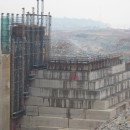Languages
Friday, April 19, 2024
News and Views from the Global South

The Evolution of Climate Legislation in Three Infographs

Climate Legislation Over the Last 10 Years

UAE Diplomatic Offensive in Latin America
The visit by United Arab Emirates Foreign Minister Sheikh Abdullah Bin Zayed Al Nahyan to Uruguay, Paraguay and Peru brings to an end 10 days of unusually intense diplomatic activity by the Gulf nation in Latin America.Relentless Violence Against Children in Central African Republic an Affront to Humanity, Says UNICEF
More than half a million people have been displaced so far by the conflict in the Central African Republic, and latest reports show that an average of three people every hour have been killed in fighting during the last two weeks alone, says the UN children’s agency UNICEF.
This Bird Has Flown – Forever
The extinction of a single species (a fish off the coast of Cuba, a bird in the Brazilian forest) creates a void that can trigger a whole series of repercussions, from the alteration of ecosystems to increased hunger.
The roller-coaster of Cuba’s dual currency system

Mystery Attackers Hit Sinai
A period of more than three months since former president Mohamed Morsi’s ouster by Egypt’s powerful military establishment have been marked by almost daily attacks on Egyptian security personnel, especially in the restive Sinai Peninsula. The identity of the attackers remains a mystery.
Pinochet’s lingering political reforms

Education: The mother of all Pinochetista reforms

The debate on doctors in Brazil – in maps and graphs

Crossing Borders with Trade
Experts are agreed that the key to unlocking the economic potential of the Southern African Development Community lies in easing cross-border flows of people, goods, capital and services. But even if border restrictions can be lifted, a lot more needs to be done in terms of enhancing road, rail, electricity supply and other infrastructure within the region.
Africa’s Largest Hydroelectric Project May Hit the Rocks
There are big aspirations for Africa’s largest hydroelectric project, the Inga III that is set to be built in the Democratic Republic of Congo. But analysts are sceptical that such an ambitious project will ever be realised.« Previous Page — Next Page »




















